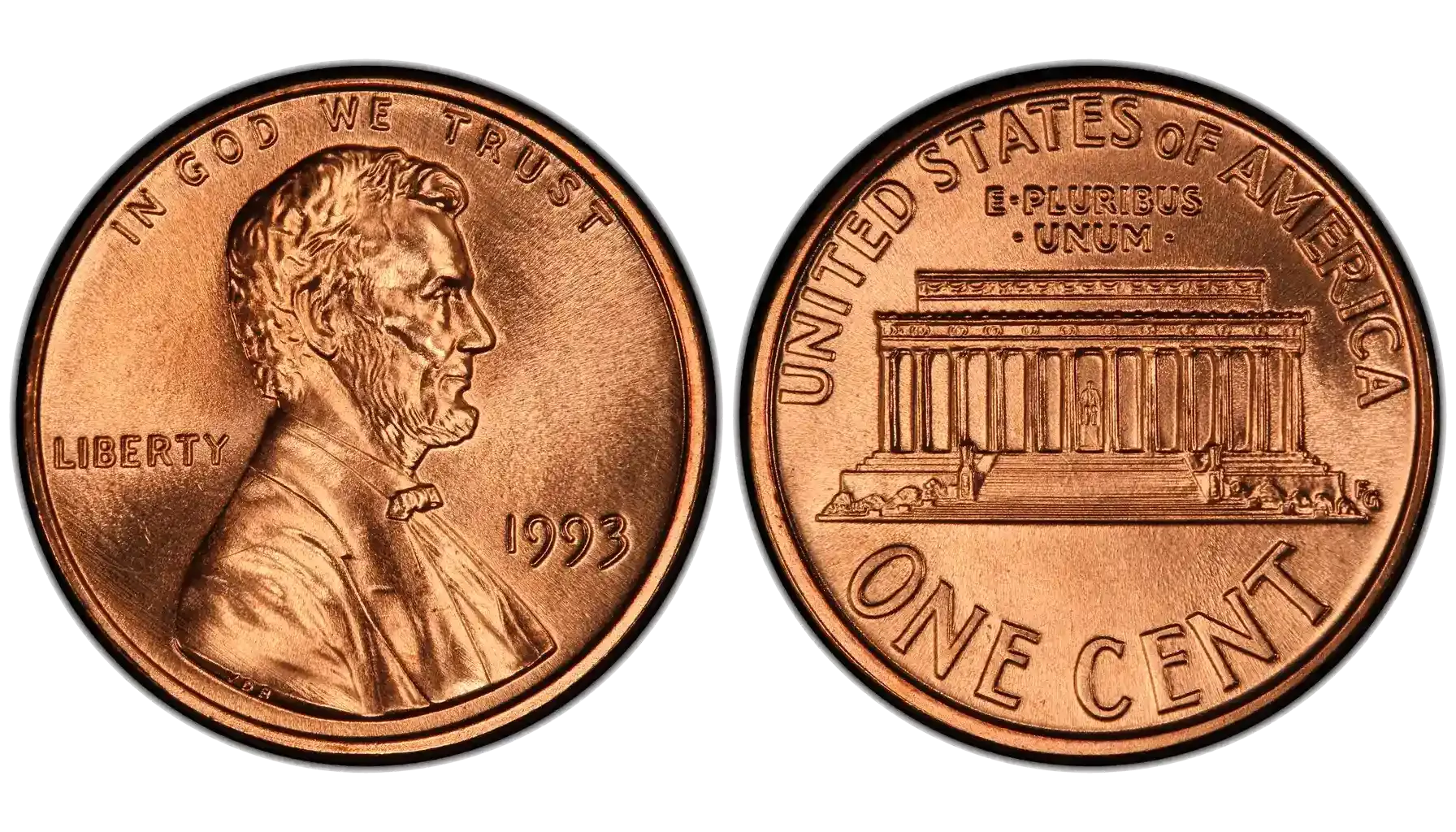Contents:
The year 1937 is long familiar to many collectors because of a famous minting error – the three-legged bison on the Denver 5-cent coin. This error captivated the rarity market with its unusual history and impressive price.
However, 1937 is notable for more than just the Buffalo Nickel. Even such a seemingly modest and common coin as the Liberty dime 1937 has many surprises and can impress you. The reason is not just its silver composition, but also possible minting errors. Many people ask how much is a 1937 Mercury dime worth – and often get an unexpected answer, because the value can vary from a few dollars to hundreds in the case of rare specimens.
But how to identify 1937 dime value today for sure? All you need to do is set up a reliable coin value identifier and know the base, so you don't miss a potentially valuable specimen. For example, 1937 Mercury dime error coins are particularly prized, and we will talk more about them, as well as the value of a 1937 dime with features.

1937 US Dime: from Mercury to Secret Mint Marks
The series was minted between 1916 and 1945. Despite its name, the obverse of the coin depicts not the Roman god Mercury, but a female figure symbolizing Liberty, wearing a winged Phrygian cap. The design was created by Adolf A. Weinman, whose initials “AW” can be found on the obverse of the coin.
Parameter | Characteristic |
Series | Mercury Dime (Winged Liberty Head Dime) |
Mints | Philadelphia (no sign), Denver (D), San Francisco (S). |
Material | 90% silver, 10% copper |
Weight | 2.5 grams |
Diameter | 17.9 mm |
Thickness | 1.35 mm |
Edge | Reeded |
Designer | Adolph A. Weinman |
Obverse | Bust of Liberty in winged helmet (symbol of freedom of thought) |
Reverse | A bundle of fascia wrapped around an olive branch; symbol of strength and peace. |
Proof Coins | Minted in Philadelphia only; 5,756 pieces; Have mirror surface, contrasting matt elements (high relief) |
Full Bands | If all three pairs of lines (especially the central one) are visible, the coin receives the FB marking, which significantly increases the value of 1937 dime. |
As we can see from the table, the 1937 Mercury dime has only three mint marks: 1937 Mercury dime no mint mark (Philadelphia), D (Denver) and S (San Francisco). But what about the 1937 dime W mint mark? You should know that there is no such coin.
In fact, the 1937 W dime may refer to a coin with the designer's initials AW (sometimes the letter A is erased, leaving only the W, which can be mistaken for the 1937 Mercury dime W as a mint mark). So always be careful, check the information and remember that the 1937 W Mercury dime value (i.e. the value of the ordinary coin with W.A. initials and another mint mark) will depend on many factors and features, just like the price of any other dime.
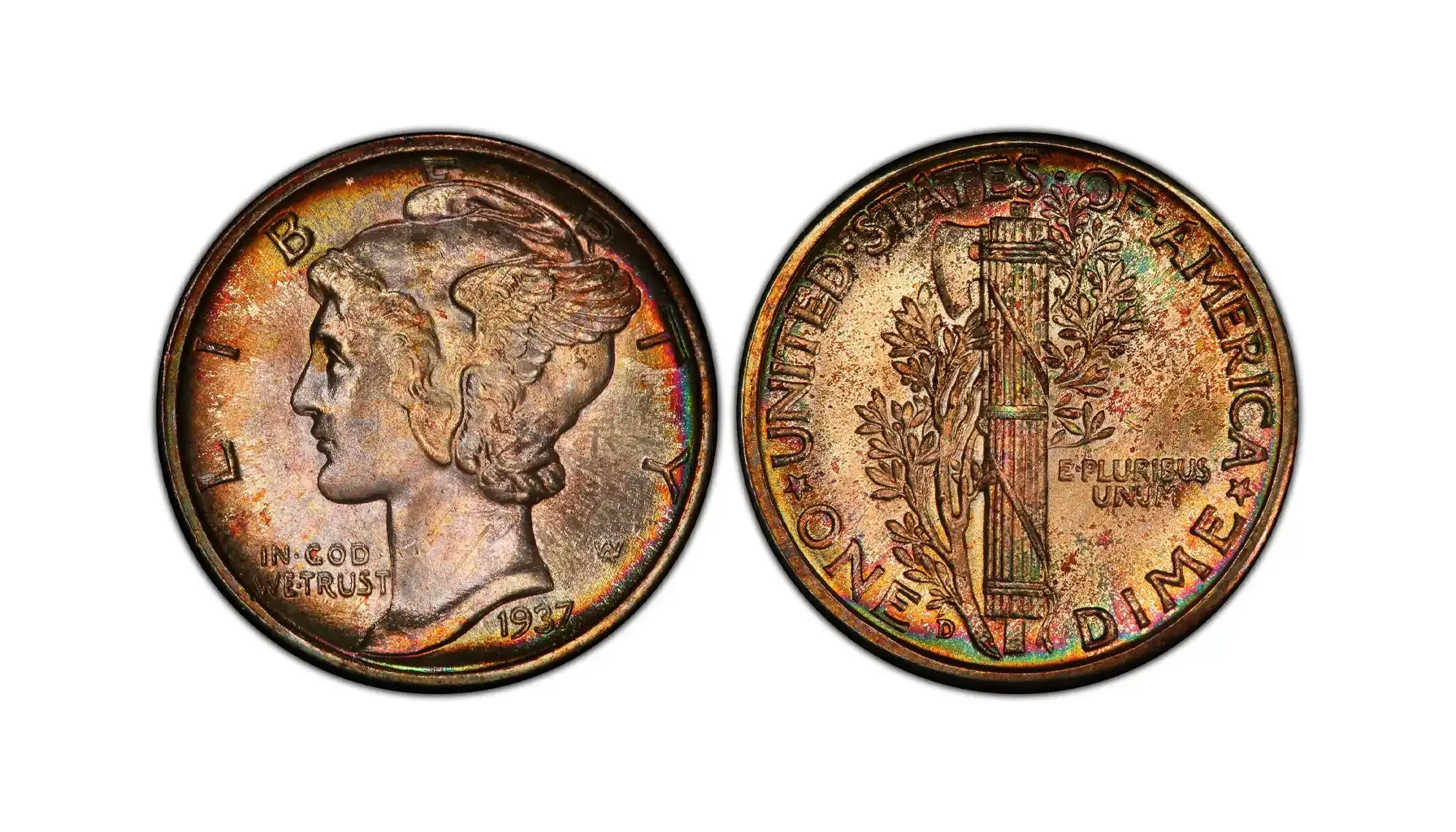
Period Features
Does the value of 1937 Mercury dime depend on the year? Absolutely. The year 1937 is not considered a key date for the series, but it is still of interest to collectors because of some peculiarities and minting errors.
In 1937 the coins were minted at three mints:
Philadelphia (no mintmark): 56,860,000 pieces
Denver (“D”): 14,146,000 copies
San Francisco (“S”): 9,740,000 copies
It is interesting how mintage can affect the perception of value. For example, the Philadelphia issue is the most common, so the 1937 dime no mint mark value is usually lower than other variants.
But 1937 D dime value is often the golden mean: such coins cost a bit more than the mass coins but are available even to beginner collectors.
At the same time, San Francisco minted S dimes are less common, so the 1937 S dime value can be considerably higher than the no mint mark pieces, especially in a good grade.
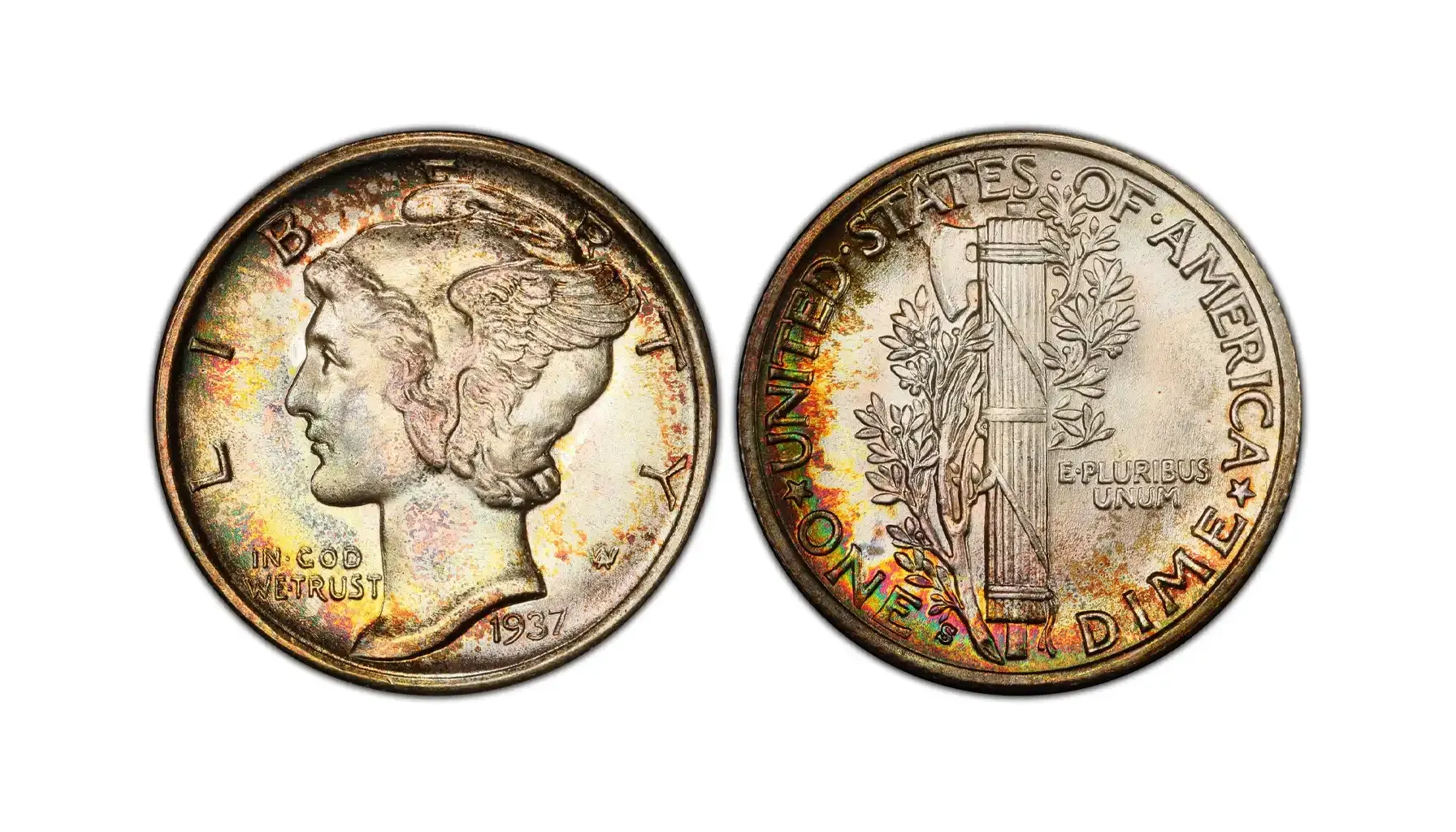
Estimated 1937 Mercury dime Value (Ordinary Pieces)
Grade | Without Full Bands | With Full Bands |
G-4 (Good) | $2.00 – $2.50 | $4.00 – $6.00 |
VG-8 (Very Good) | $2.50 – $3.50 | $5.00 – $8.00 |
F-12 to VF-20 | $3.00 – $6.00 | $6.00 – $12.00 |
XF-40 (Extra Fine) | $6.00 – $10.00 | $10.00 – $20.00 |
AU-50 (Almost Unc) | $10.00 – $15.00 | $20.00 – $30.00 |
MS-60 to MS-63 | $18.00 – $35.00 | $35.00 – $60.00 |
MS-65 (Gem Unc) | $35.00 – $45.00 | $65.00 – $100+ |
Now you have an idea of the 1937 Liberty dime value, but of course we don't end here. Of course, there are some interesting minting errors that can significantly increase the value of a 1937 Mercury dime, which we will discuss below.
Minting Mistakes: Charming Imperfections
Everyone makes mistakes - and mints are no exception. But if in other spheres an error is something negative, then in numismatics it can turn an ordinary coin into an object of hunt for collectors.
Below we will consider key 1937 dime error examples that are found in circulation and at auctions. These details will help you understand what is a 1937 dime worth in the case of an irregular mintage.
1937 Clipped Planchet
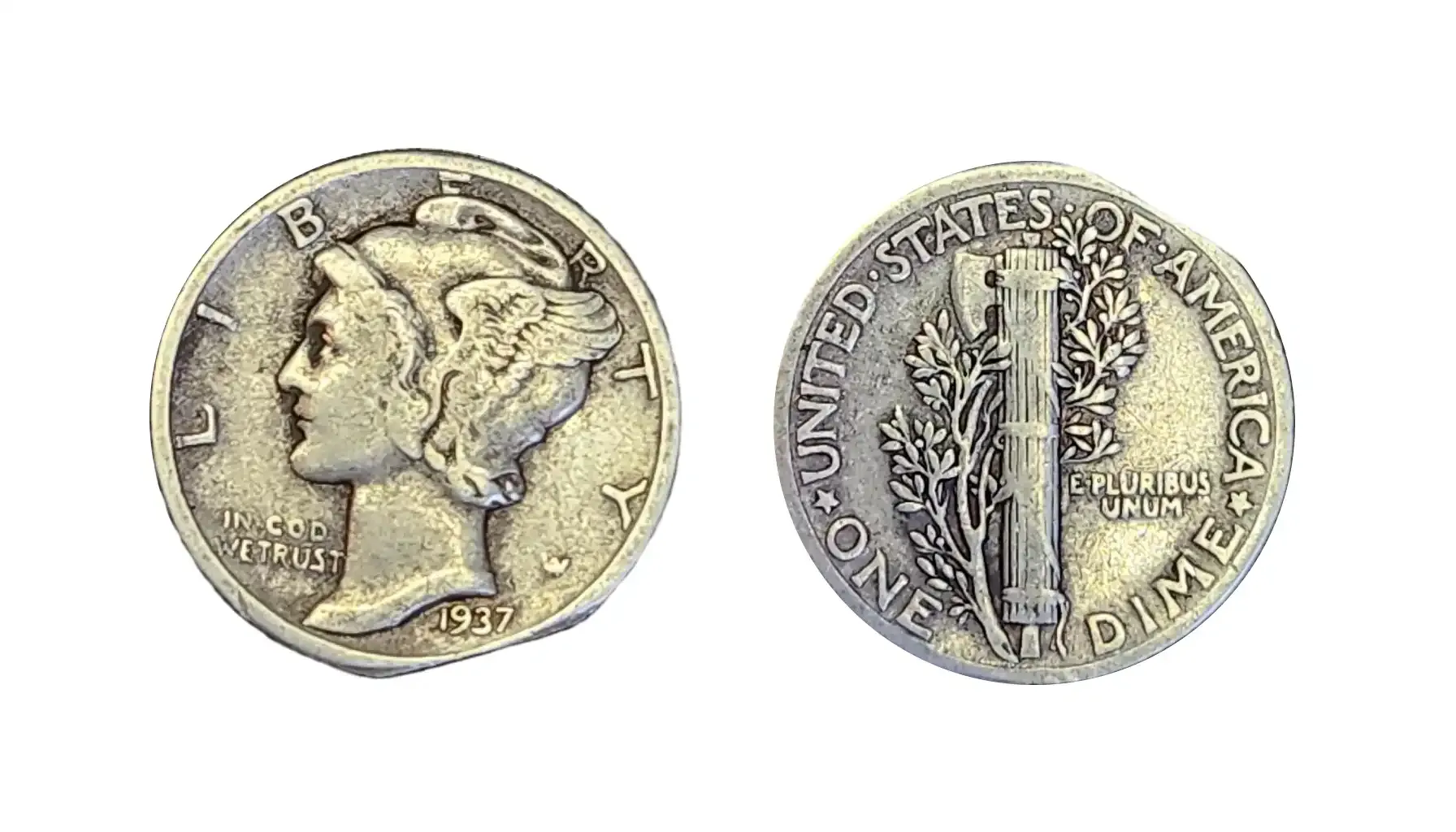
The error occurs when the coin blank is cut overlapping or too close to the edge of the metal strip. As a result, the piece has a distinctly missing area along the edge - sometimes a small semicircle, sometimes a larger fragment. Such specimens are easy to identify visually: the edge area is uneven, and the metal in this area is often less clearly imprinted.
One specimen with such an error was offered on eBay for $75. Depending on the size of the cut, the value of a 1937 Mercury dime with this error can range from $50 to $150.
1937 Off-Center Strike
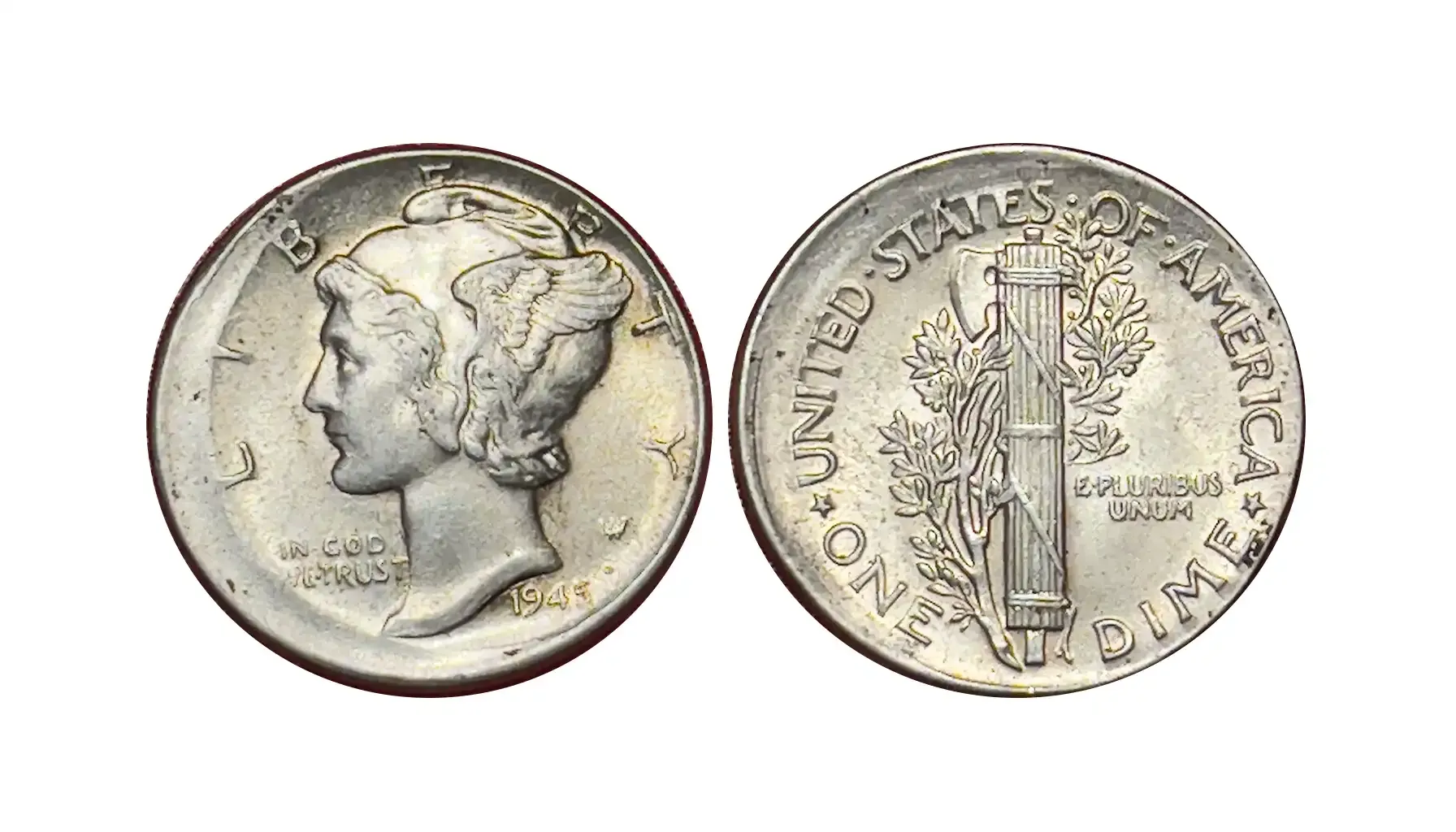
When the blank is shifted during minting, the coin's pattern is off-center. The level of misalignment ranges from minor to extreme - and the more pronounced the error, the higher the value.
This Mercury dime 1937 value can be 10 times more than the normal price. Coins with an offset of more than 50% are rare, especially in good condition. This example of error can cost $75 for a moderate offset to $200 or more for a pronounced offset.
1937 Doubled Die Obverse
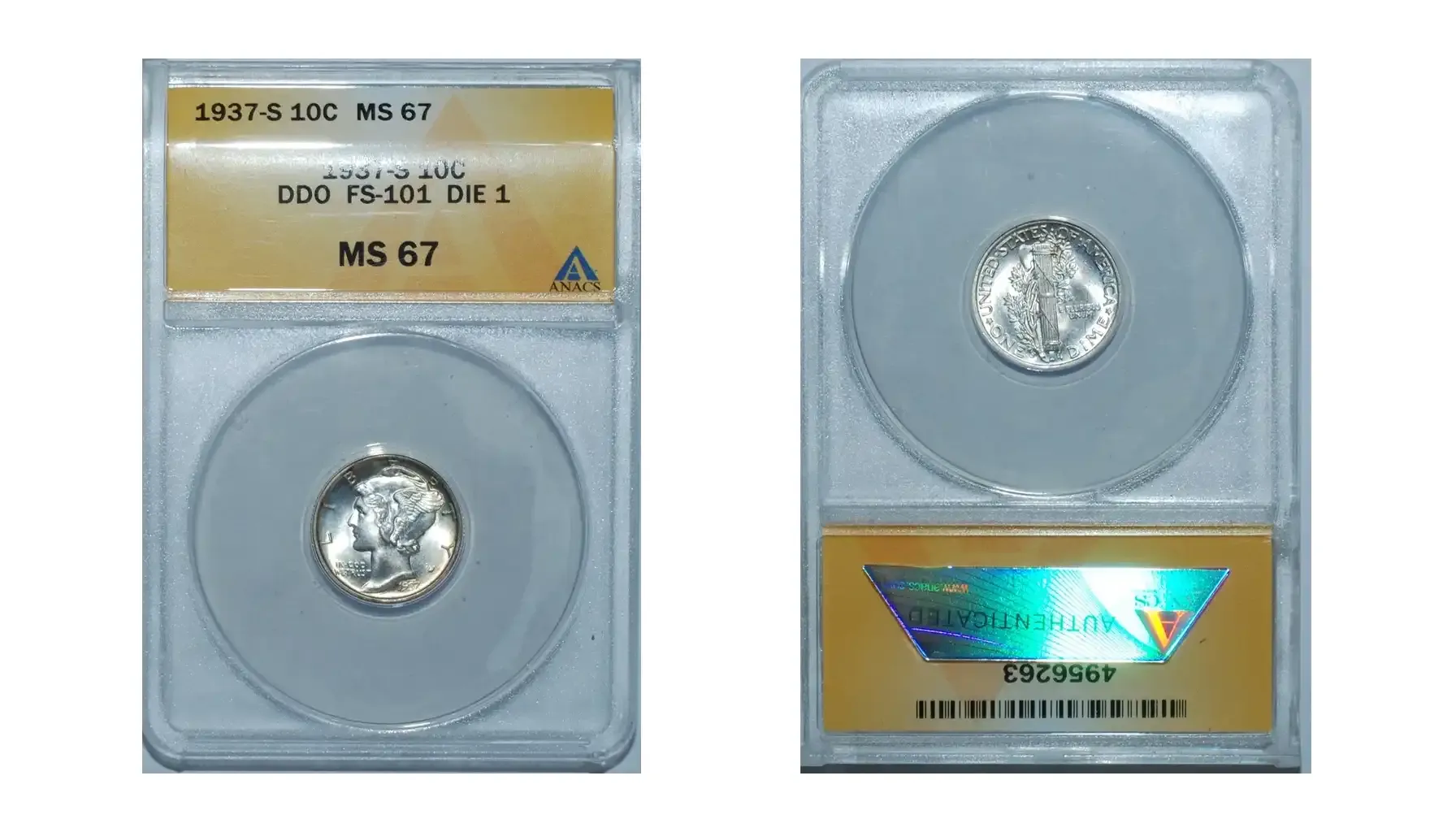
This type of error occurs when the stamp is slightly displaced during creation and leaves a reprint. As a result, the separate elements - date, inscriptions, initials “AW” - appear doubled. This is especially noticeable when enlarged or under magnification.
On some pieces, you can see the doubling of the year or the letters “LIBERTY”. This 1937 silver dime value can reach $100-$500+ depending on the degree of doubling and condition of the coin.
1937 Repunched Mintmark
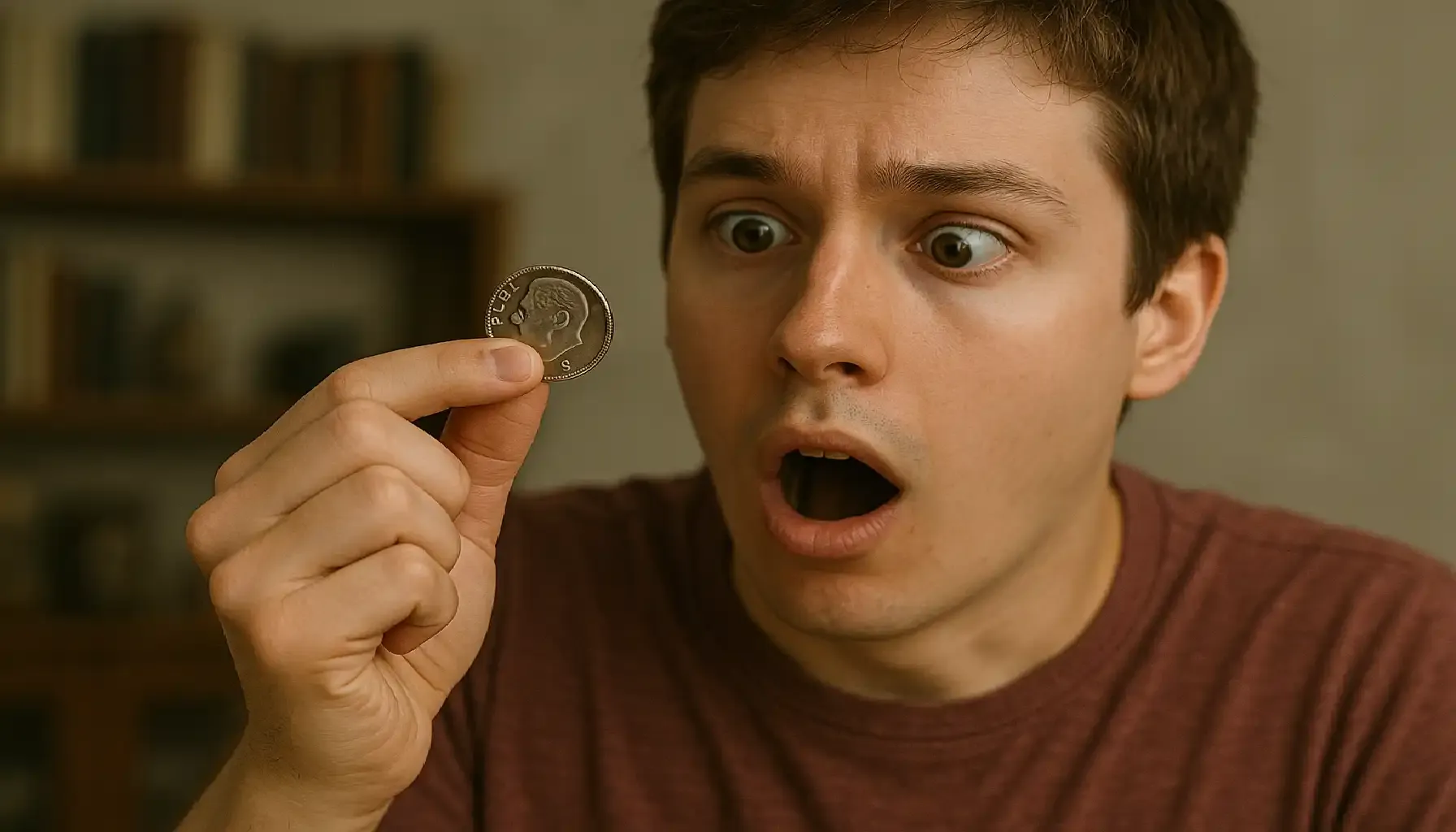
In 1937, the “D” and “S” mint marks (Denver and San Francisco, respectively) were struck by hand. Sometimes the mark was reapplied if the first strike was unsuccessful. This resulted in duplicate or offset marks.
Such errors are easily visible thanks to a magnifying glass or other tools for collectors like a numismatic microscope. Especially valuable are variants with a distinct double mark. For example, a 1937 D Mercury dime value with such an error can be worth up to $250. In normal condition, the cost of such examples starts at $80.
1937 Lamination Error
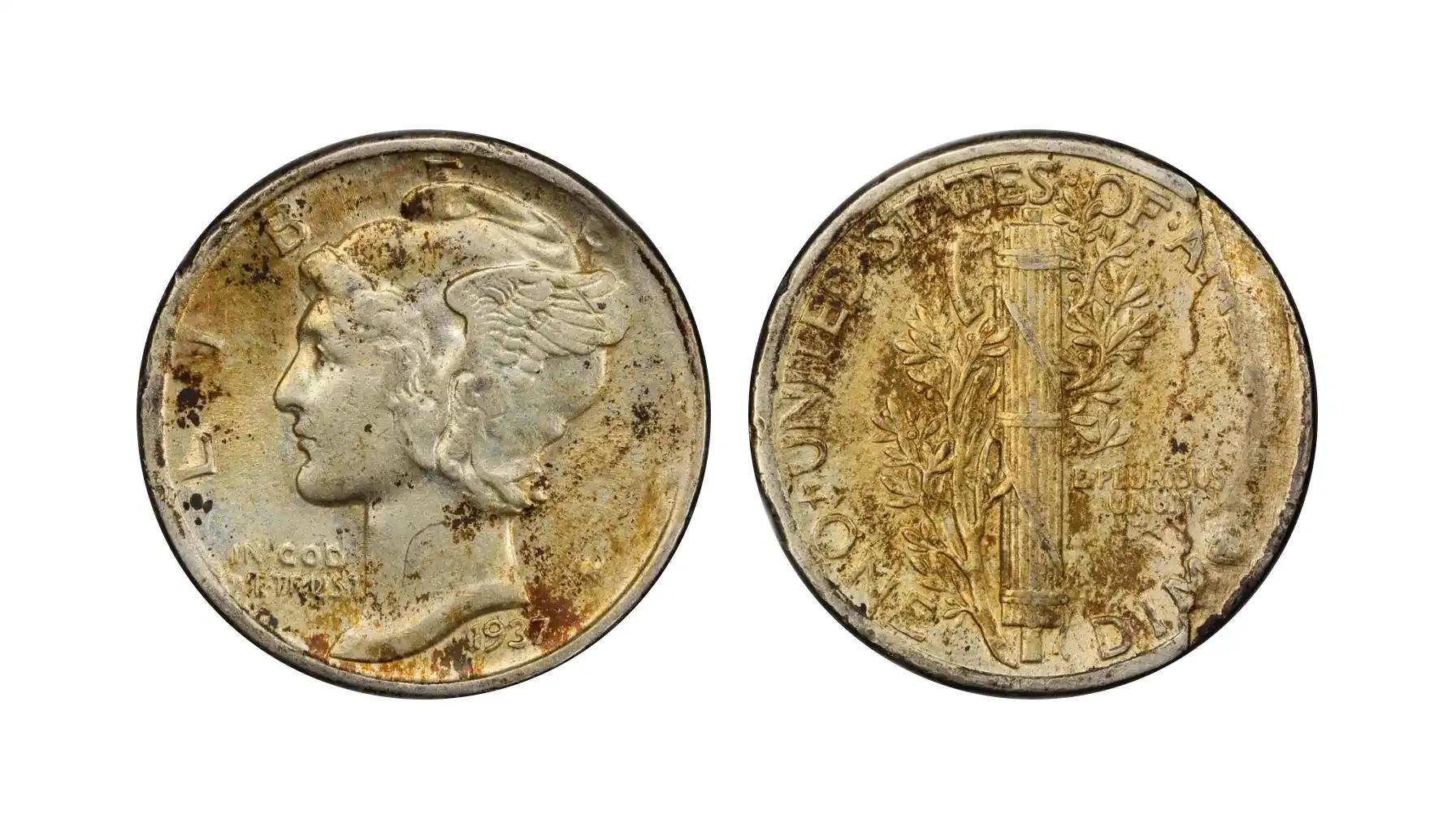
Sometimes the metal from which the blank is made has hidden defects - inclusions, bubbles, delaminations. During minting, such areas begin to peel away from the surface of the coin. This is called a lamination error.
Such defects may appear on coins as broken lines, rough areas, or even flaking fragments. Is a 1937 dime worth anything? Depending on the degree of severity, the price of a specimen reaches $60-$180.
1937-S with Major Planchet Crack
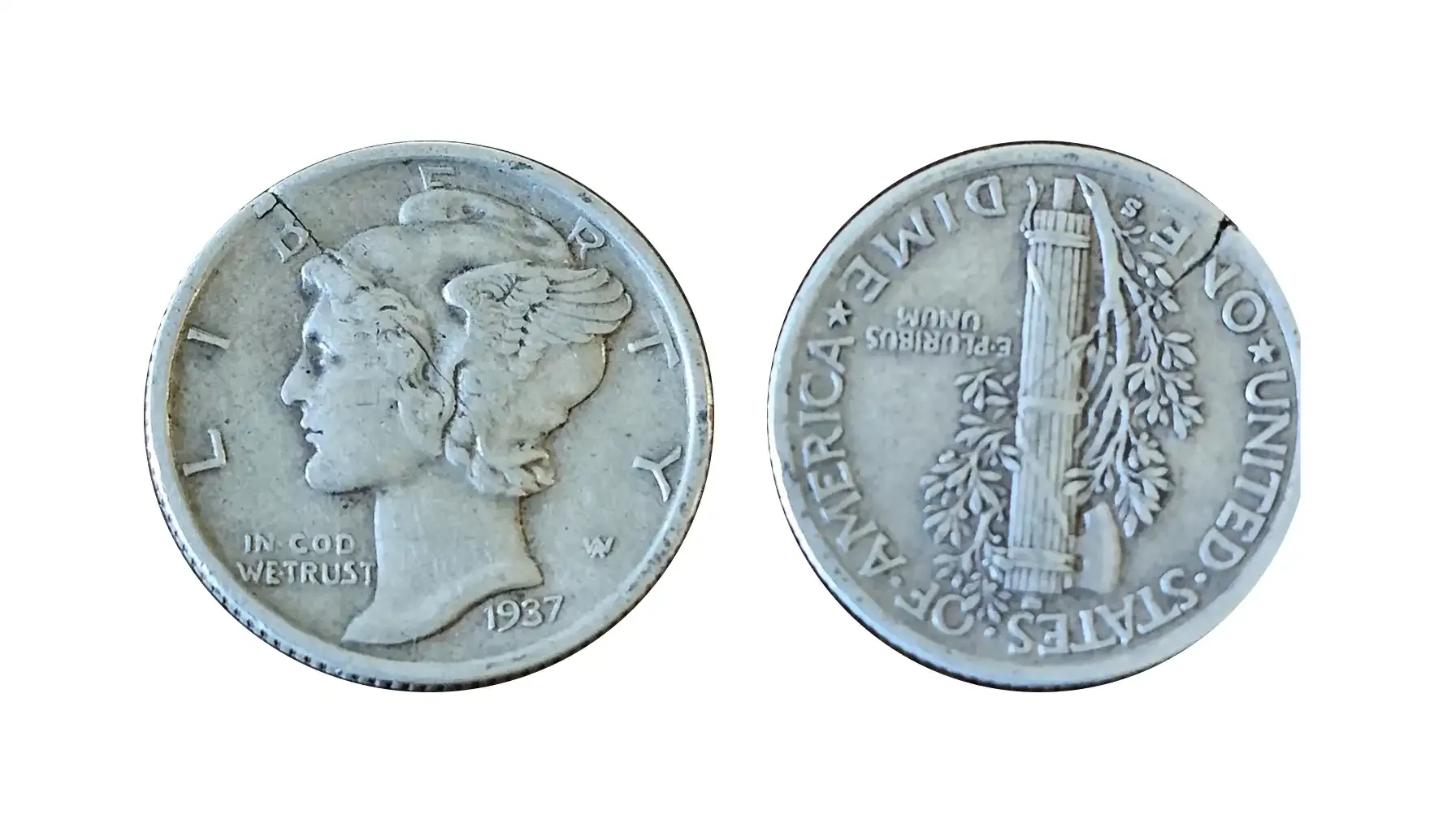
A rare but spectacular error is a serious crack in the blank. It appears before minting and remains on the finished coin as a deep line or tear running through part of the design. This makes the coin unique, especially if the “S” mark is clearly visible.
This 1937 S Mercury dime value is $75 on eBay. Even with moderate preservation, such pieces are considered collectible.
1937-D "Cod" Error
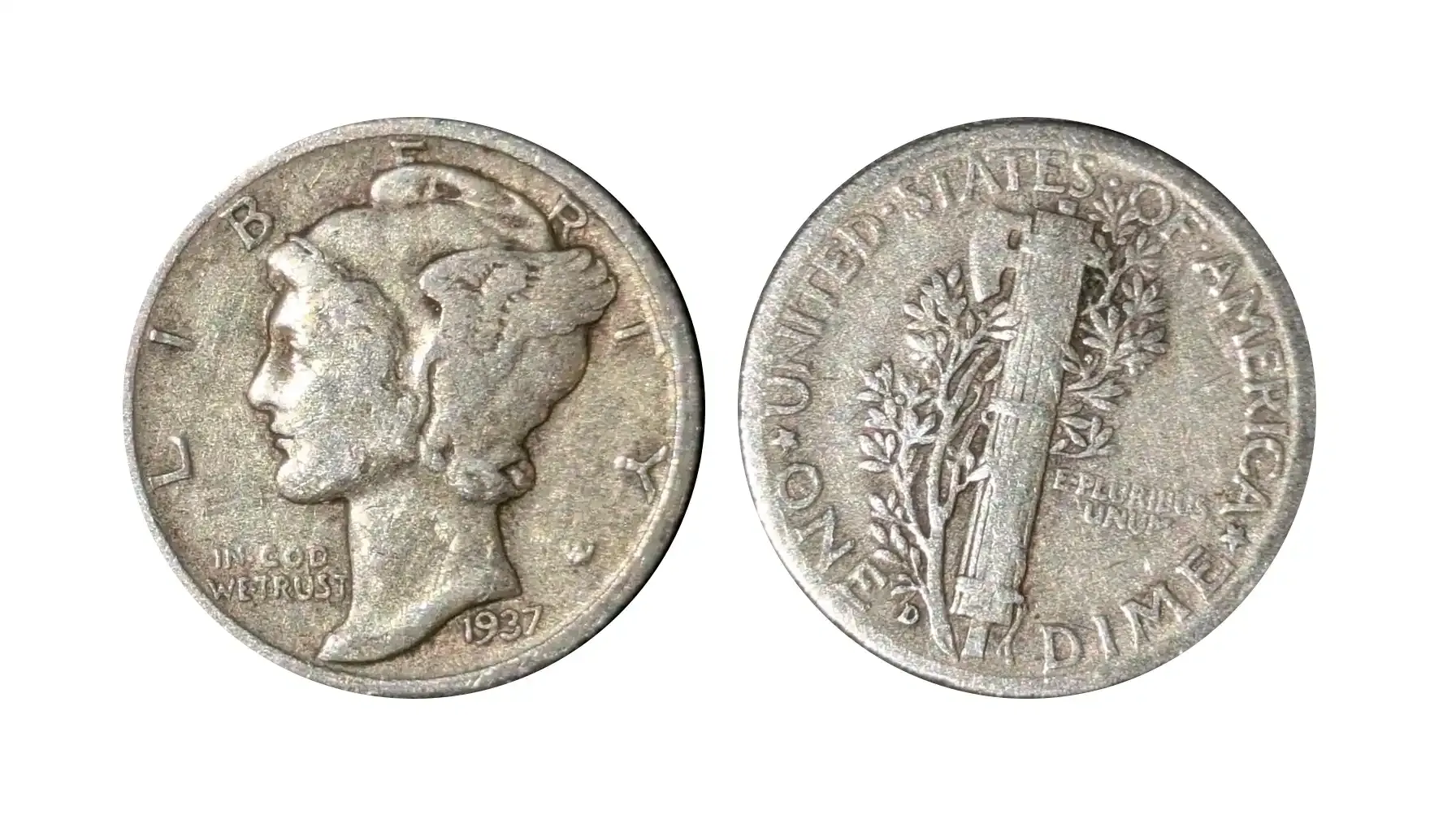
The error received its unofficial name because of the distortion of the inscription IN GOD WE TRUST on the obverse of the coin. In the word GOD, the letter G is printed with a defect that visually resembles the letter C - making the word appear as “COD”. This curious defect is thought to be the result of either damage to the stamp or problems with the metal feed at the time of minting.
A specimen with a similar defect is listed on eBay for $100 in AU grade and almost FB, further increasing its appeal to collectors. The price may vary depending on the coin state and the clarity of the letter distortion.
Authenticity Issues: How to Distinguish Fakes from Real Mistakes
The numismatics market is not safe from fakes. That is why it is important to be able to distinguish between real minting errors and artificially created defects.
Visual inspection: Use a magnifying glass to examine the coin in detail. Real errors have characteristic features like a smooth edge on a Clipped Planchet or a clear doubling of elements on a Doubled Die.
Weight and magnetic test: Check the coin's weight and its response to a magnet. Real dimes are not magnetic and weigh about 2.5 grams.
Digital expertise: Install and use the Coin ID Scanner to get accurate information about a coin. It's an easy and convenient way to find answers to the questions: How do I know what kind of coin it is? How much is a 1937 dime worth today? How to quickly get historical information about a coin? With the app you can easily find out the most about the original piece and apply this data to expose the counterfeit.
Search and Invest or Spend?
If you think that everything interesting has been found long ago - the 1937 dime may surprise you. This coin is like a modest friend in the second role: it does not shout about its value, but you should dig deeper, and you will find interesting variations and stories. Not all specimens will make you richer, but attention to detail and a little luck will help you find a new piece to add to your collection.

